■2016 Cherry Bloom Forecast - Cherry Blossom Bloom Period -
Areas that are expected to bloom by the first half of this week are expected to bloom smoothly, and cherry blossom viewing spots that bloom in the first half of this week will be able to enjoy hanami longer than last year, when the viewing season ended at once. However, as temperatures will drop due to cold air from the second half of this week until the end of March, growth is expected to slow down in areas in western and eastern Japan that will start blooming in the near future.
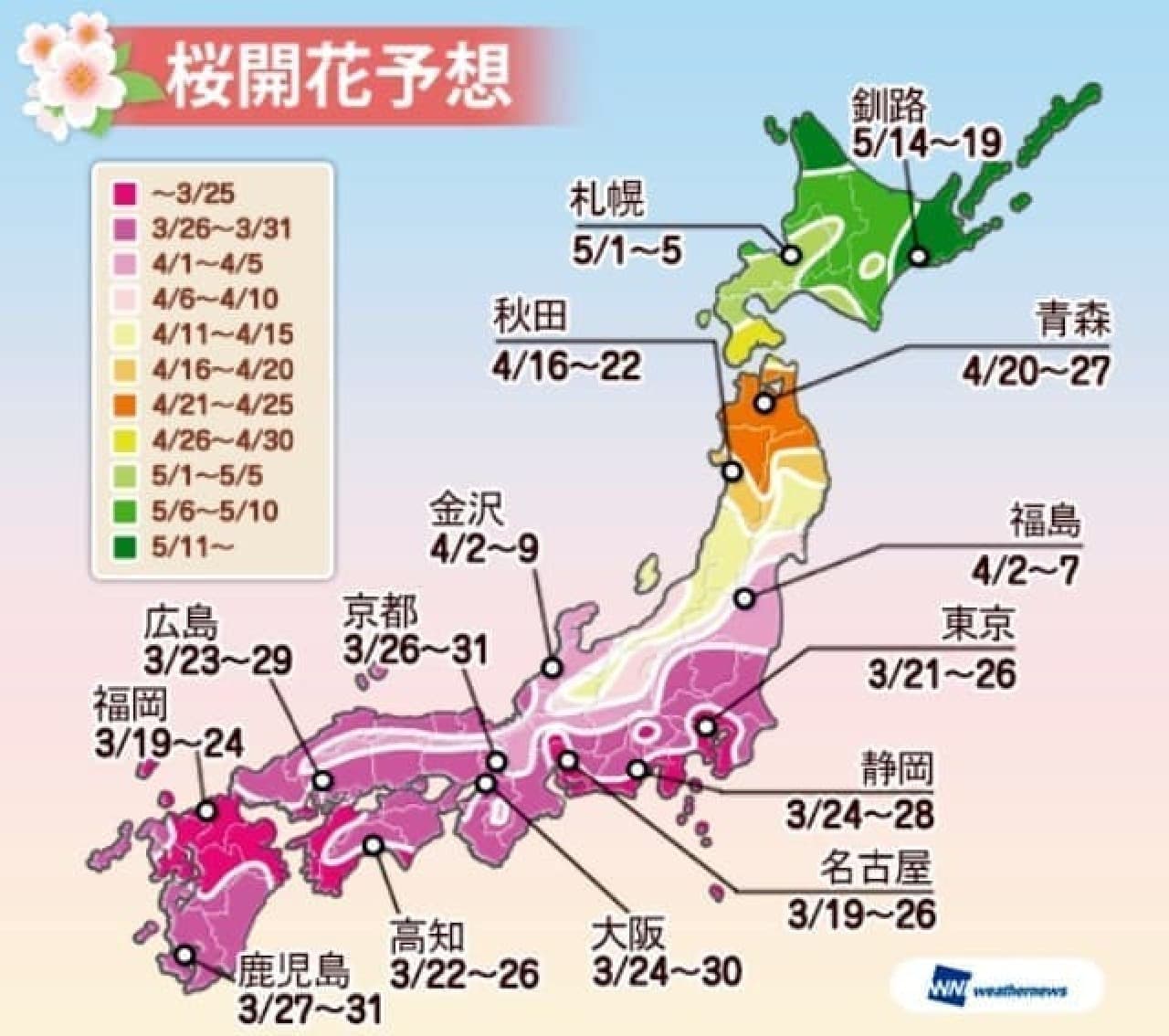
In April, temperatures will rise and cherry blossoms will bloom rapidly, with blooming beginning in early April in Hokuriku, northern Koshin, and southern Tohoku, and other areas in northern Japan are also expected to have normal or slightly earlier blooming periods.
This information is based on the company's fourth nationwide bud survey conducted from March 17 to 19. For the latest information on cherry blossom trends, please refer to Weathernews' special website "Cherry Blossom Blossom Forecast 2016. Information on cherry blossoms at 700 cherry blossom viewing spots nationwide can be found on Weathernews' special website "Sakura Ch.", the "Weathernews Touch" smartphone application "Sakura Ch.", and the special website "Sakura Ch." for smartphones.
Cherry blossom forecast for each area:
◆Hokkaido The blooming front will land in southern Hokkaido around April 28!
In Hokkaido, temperatures in April are expected to be normal to slightly above normal, and cherry blossoms are expected to bloom on average or slightly earlier than normal.
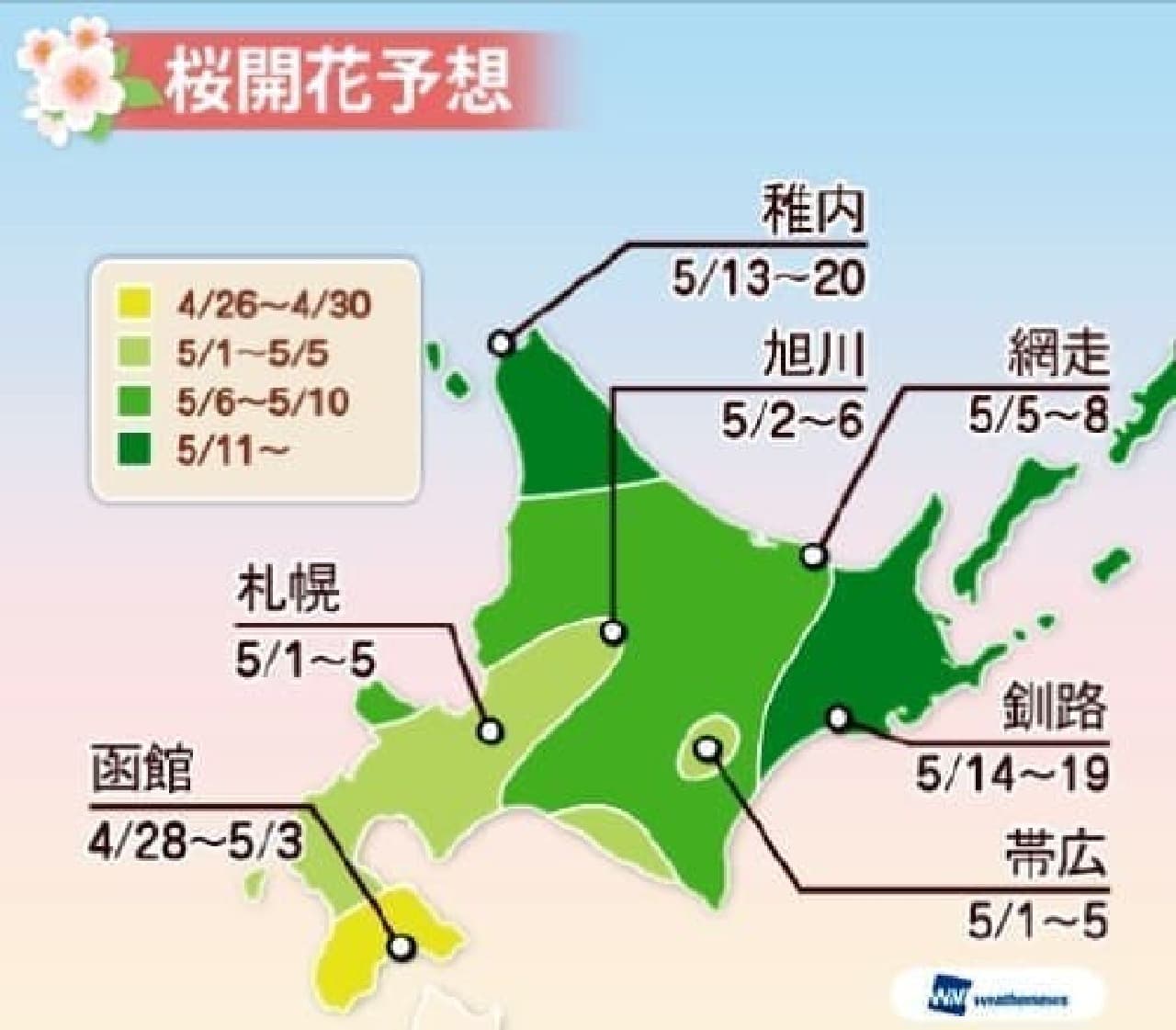
In the Sapporo area, cherry blossoms will start blooming in early May, gradually coming into full bloom in the latter half of GW, and will be at their best in early May. The Nemuro and Kushiro areas, which have the slowest blooming season in Japan, will also start blooming in mid-May and will be in full bloom by around the 20th.
◆Tohoku The southern Tohoku area will bloom in early April!
Cherry blossoms in the Tohoku region are growing at the same speed as last year, and the temperatures in March and April are expected to be normal to slightly higher than normal, which will accelerate the growth of buds, resulting in normal to slightly earlier blooming of cherry blossoms.
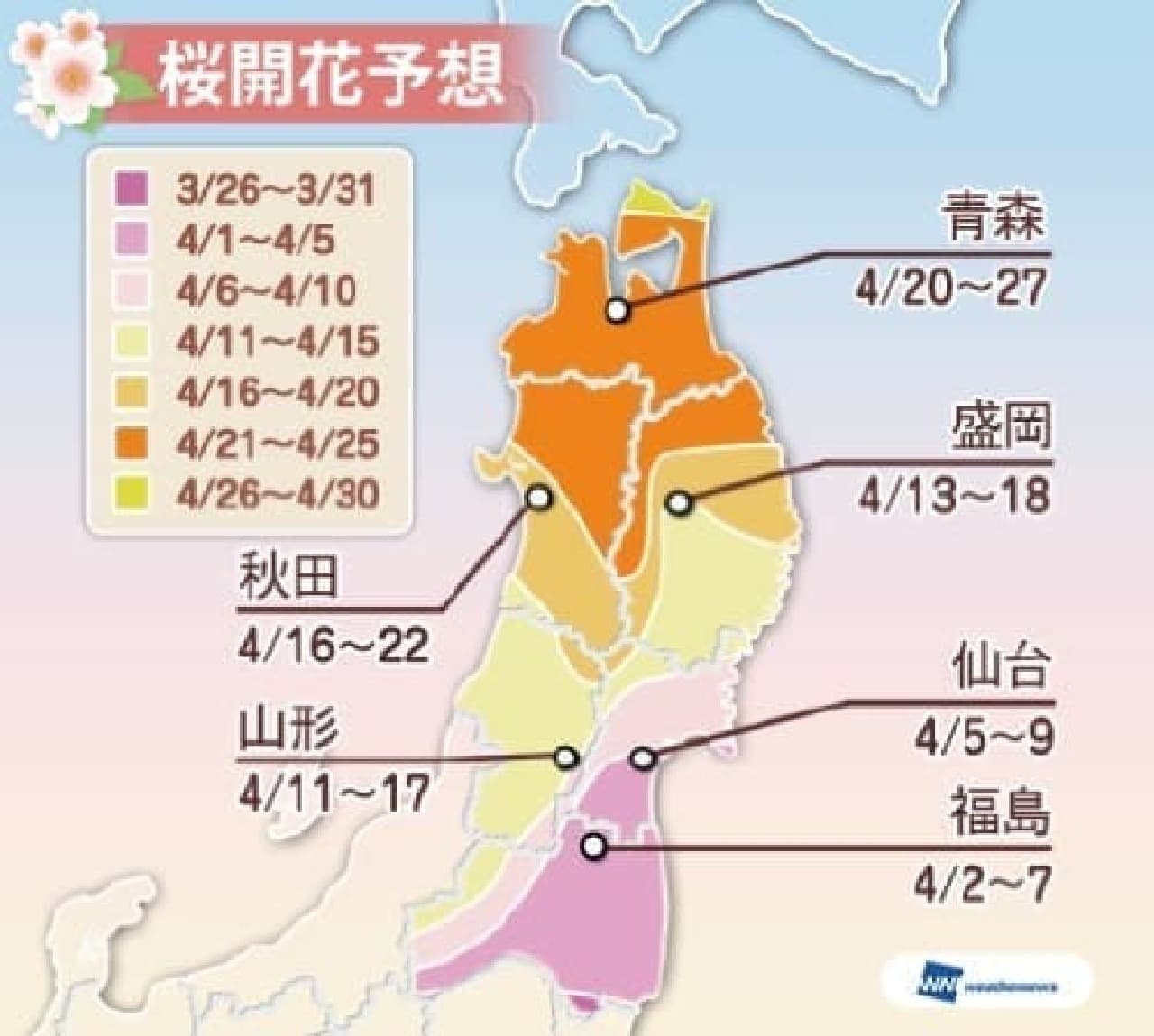
Flowering is expected to begin in early April from the Pacific Ocean side in the southern part of the country, and the blooming front is expected to move steadily northward through late April. Cherry blossoms are expected to be at their best around the time of the entrance ceremony in Fukushima City, around April 10 in the Sendai area, and at the end of April in the Aomori area.
◆Kanto: Southern Kanto will be able to enjoy Hanami for a long time!
Although there was a return of cold weather around March 10 in the Kanto region, the warmth that followed allowed buds to grow rapidly. Tokyo, the first bloomer in eastern Japan, bloomed on March 21, slightly earlier than normal. Cherry blossoms in areas where blooming is expected by the first half of this week are expected to bloom smoothly.
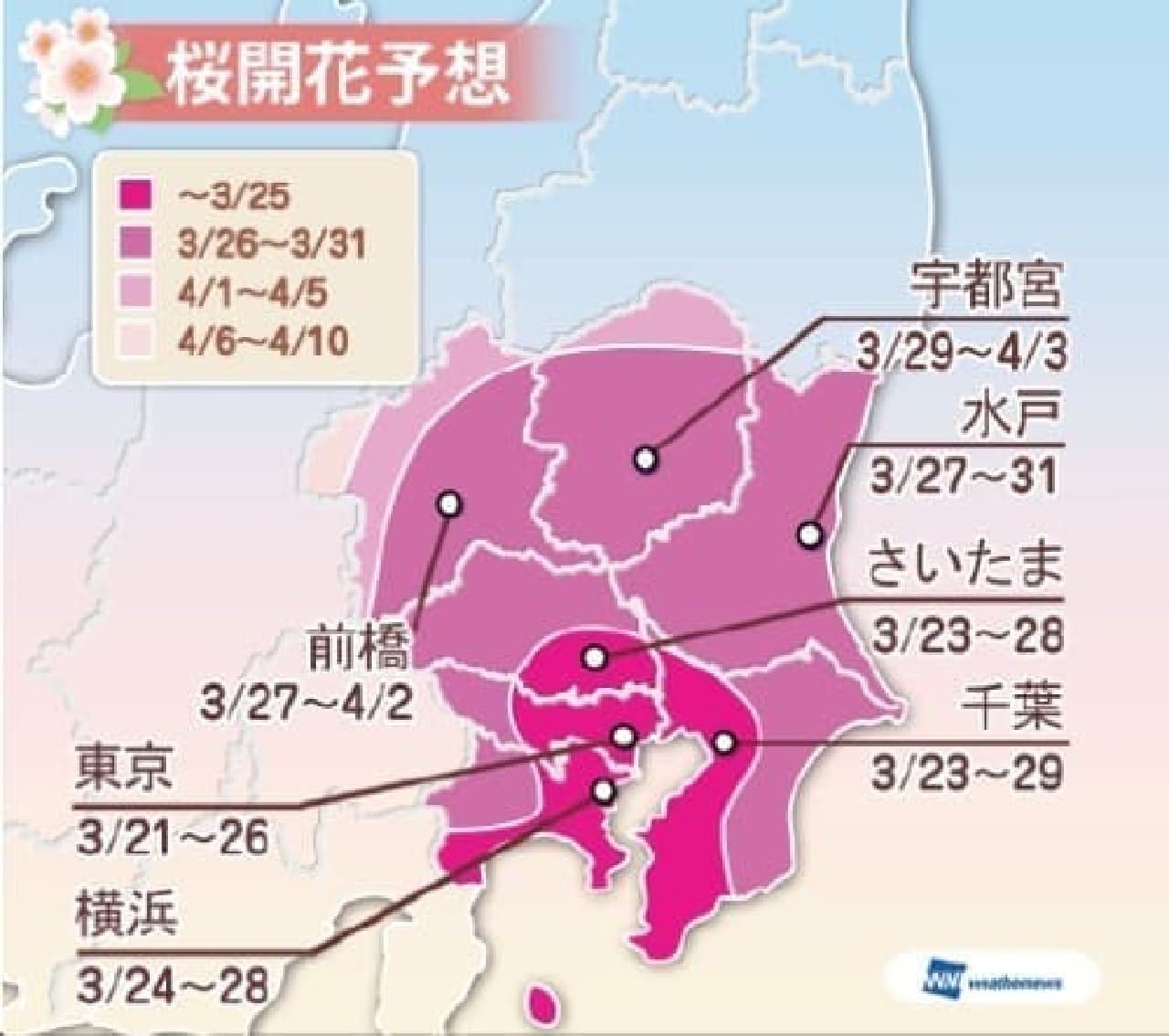
The northern Kanto region is also expected to bloom on par with or slightly earlier than normal, although a return of cold weather is expected from the second half of this week through the end of March, which will slow down the speed of blooming. In addition, the cherry blossoms that have already started blooming are expected to grow slowly in the southern part of the Kanto region due to the cold air that will keep the blossoms cold until the end of March, allowing visitors to enjoy cherry blossom viewing for longer.
Cherry blossoms around central Tokyo will be at their best from the weekend over a wide area and will be in full bloom by the end of March. Cherry blossoms in northern Kanto will be at their best around the time of the entrance ceremony.
◆Central Japan: Cherry blossom viewing season starts next week in Nagoya!
In western Tokai and southern Koshin, the warm weather in the second half of last week has made the buds grow well. The blooming season has started a little earlier than normal in Nagoya, Gifu and Kofu area.
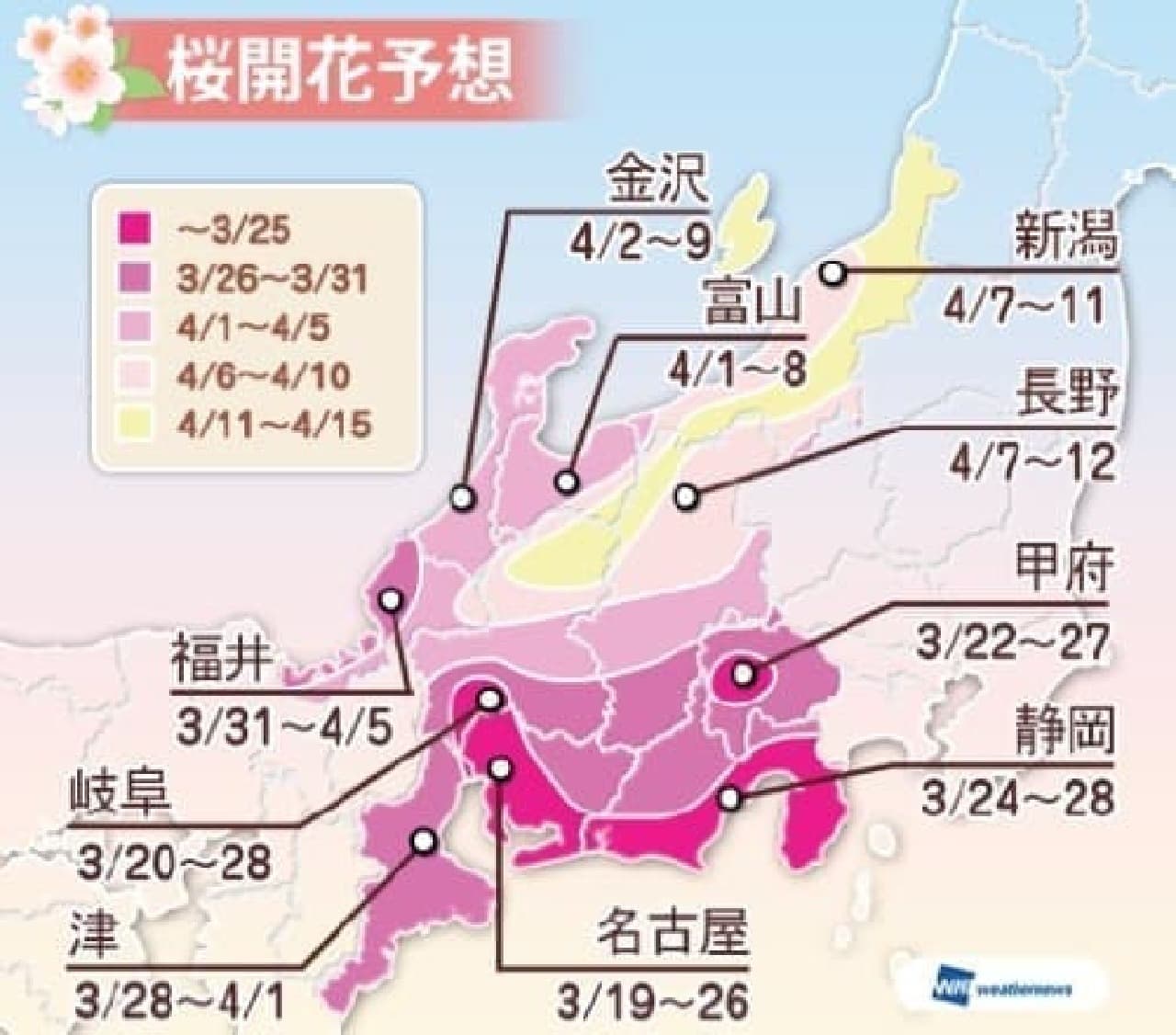
The return of cold weather is expected from the second half of this week through the end of March, which will slow the overall progress toward blooming, and blooming in Shizuoka Prefecture in the eastern Tokai region will likely be on par with normal or slightly later than normal. In Hokuriku and northern Koshin, growth is also expected to stall due to the return of cold weather, but buds have grown as fast or faster than last year, so blooming is likely to be on par with or slightly earlier than normal.
Cherry blossoms in Tokai and southern Koshin will bloom slowly as cold air will keep the flowers cold until the end of March, and visitors will be able to enjoy viewing the blossoms next week. In Hokuriku and northern Koshin, many areas will be at their best in early to mid April, while those around Niigata and Nagano will be able to enjoy cherry blossom viewing in mid April.
◆Kinki: Blooming is expected from Osaka and Wakayama on March 24!
In the Kinki region, the warm winter, especially in coastal areas, caused insufficient dormancy breakthrough, and bud growth was a little delayed until the end of February. However, the warm weather in early March and the second half of last week has accelerated the growth of buds, and the cherry blossoms are expected to bloom on par with or slightly earlier than normal.

Cherry blossoms in the Kinki region are expected to start blooming on March 24 in Osaka and Wakayama cities. Since cold weather is expected to return from the latter half of this week to the end of March, the progress of blooming in other areas will be slow, and cherry blossom viewing can be enjoyed around the end of next week. Some places will be able to enjoy full bloom and snowstorms of cherry blossoms until around the time of the entrance ceremony. Yoshinoyama in Nara Prefecture is expected to be at its best in mid-April.
In Kobe and other areas by the sea, where dormancy is not fully broken, and in the northern Kinki region, which is susceptible to the return of cold weather, blooming is likely to occur around the end of March.
◆Chugoku and Shikoku: Flowering season begins in Kochi!
The blooming season in Chugoku and Shikoku is expected to start from Kochi City around the 22nd. The warm winter in Chugoku and Shikoku caused insufficient dormancy breakthrough, and bud growth was delayed until the end of February. However, warm weather in early March and the second half of last week accelerated the growth of buds, and flowering in Chugoku and Shikoku was on par with normal in a wide area, with some areas in the San-in region slightly earlier than normal.
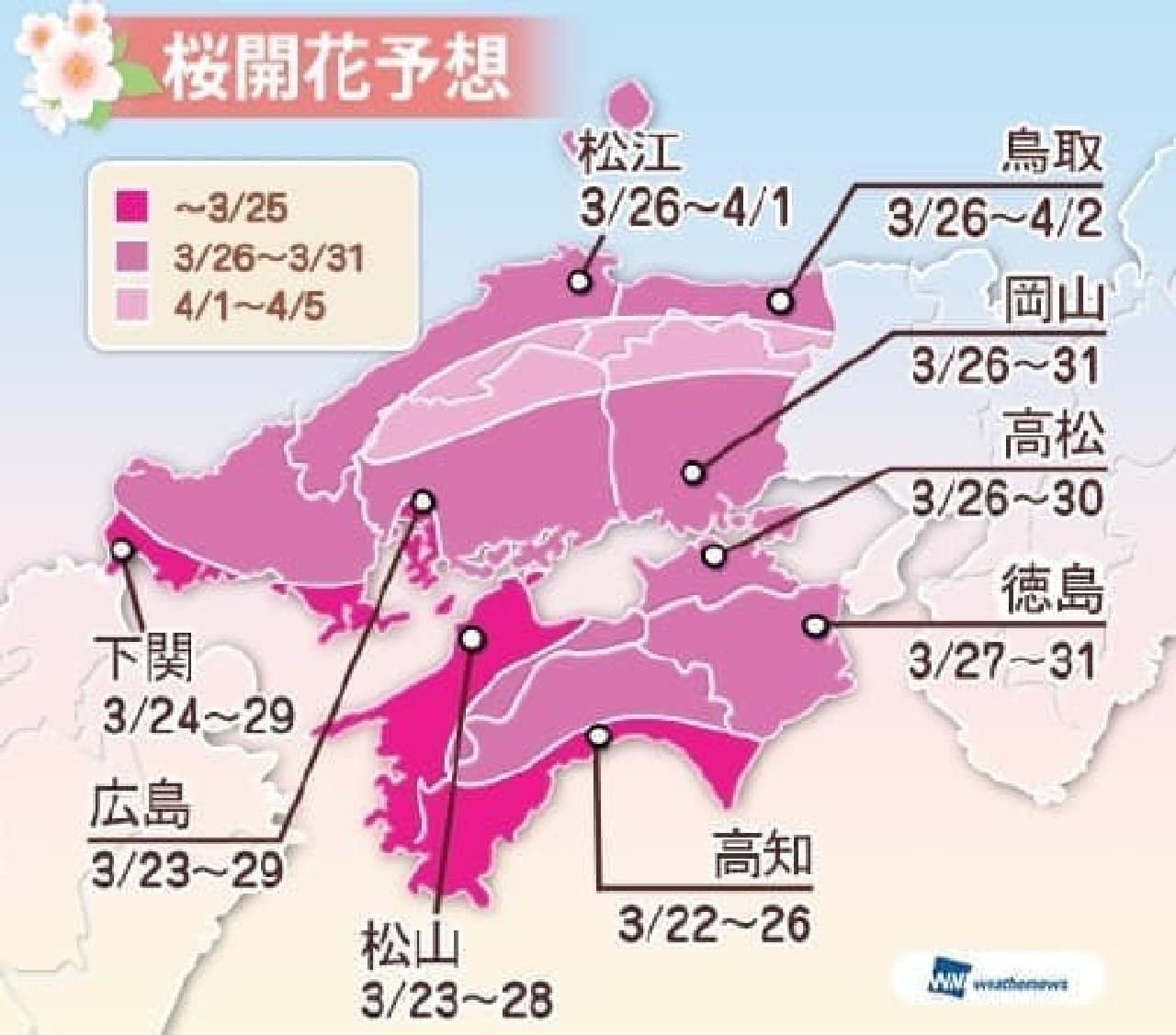
Since cold weather is expected to return from the latter half of this week to the end of March, the blooming will proceed slowly in the coming areas, and visitors will be able to enjoy viewing cherry blossoms from around the end of next week.
◆Kyushu: Long Hanami season in Fukuoka, Nagasaki and Kumamoto!
Cherry buds in Kyushu have been growing well mainly in the northern part of the prefecture due to the warm weather in early March and the second half of last week, and in Fukuoka Prefecture, they started blooming on March 19, slightly earlier than normal, with 20% of the prefecture's cherry trees in bloom and entering the blooming season. In Nagasaki City and Kumamoto City, where blooming began on the 22nd, and around Fukuoka City, where blooming has already started, the blooming of cherry blossoms will be slowed down by the cooler weather in the second half of the week, allowing visitors to enjoy cherry blossom viewing until next weekend.
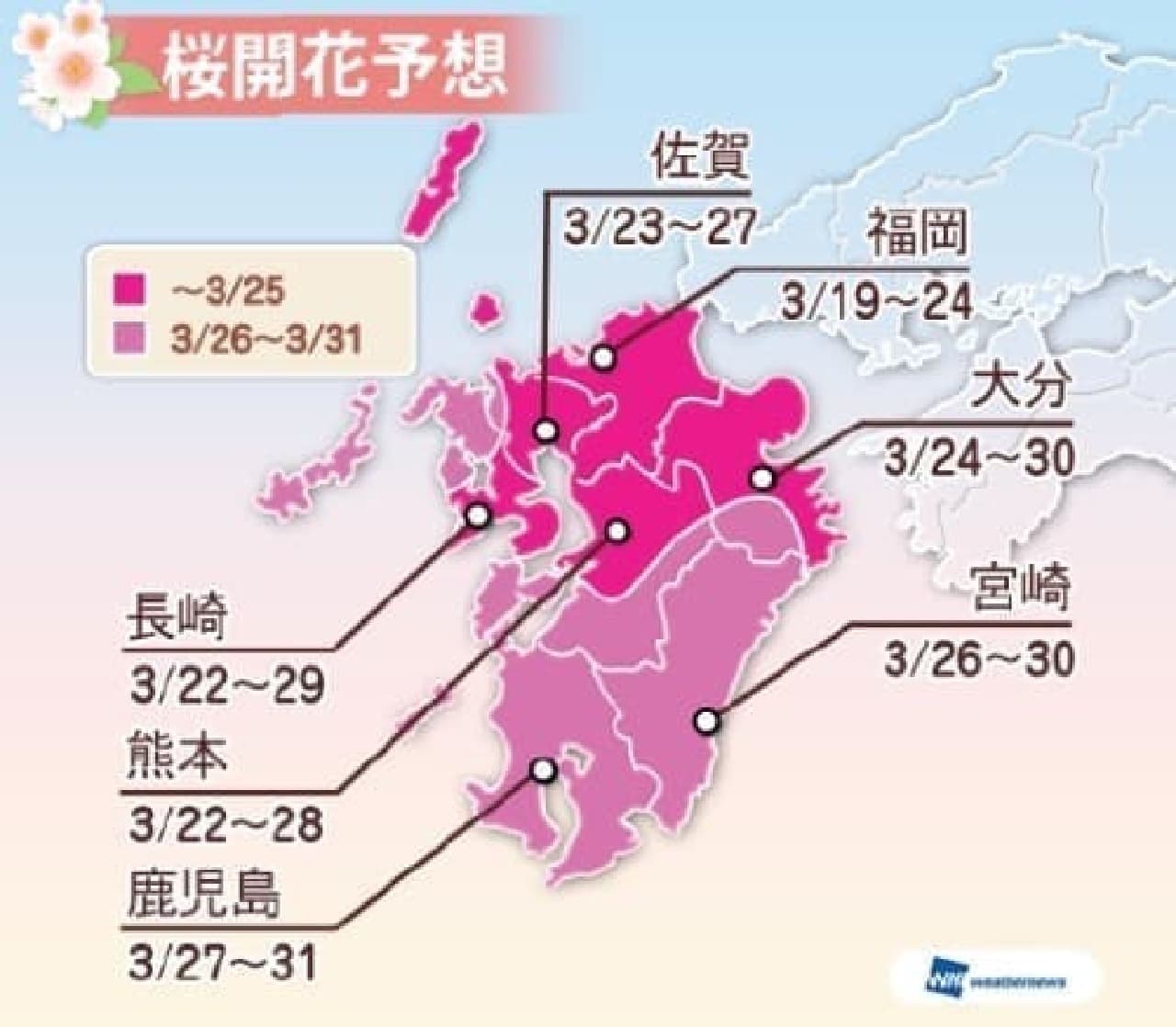
On the other hand, in southern Kyushu, the lack of dormancy due to the warm winter and the return of cold weather in the first half of last week have caused the growth of buds to be delayed compared to the same period last year. In southern Kyushu, blooming is expected to start a little later than normal, with the earliest blooms beginning at the end of next week.

















